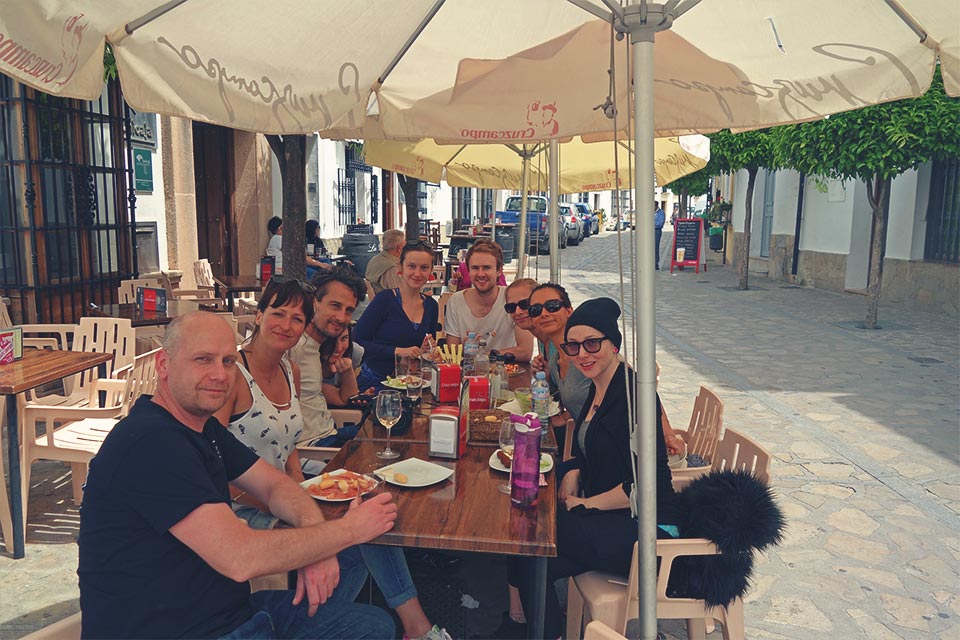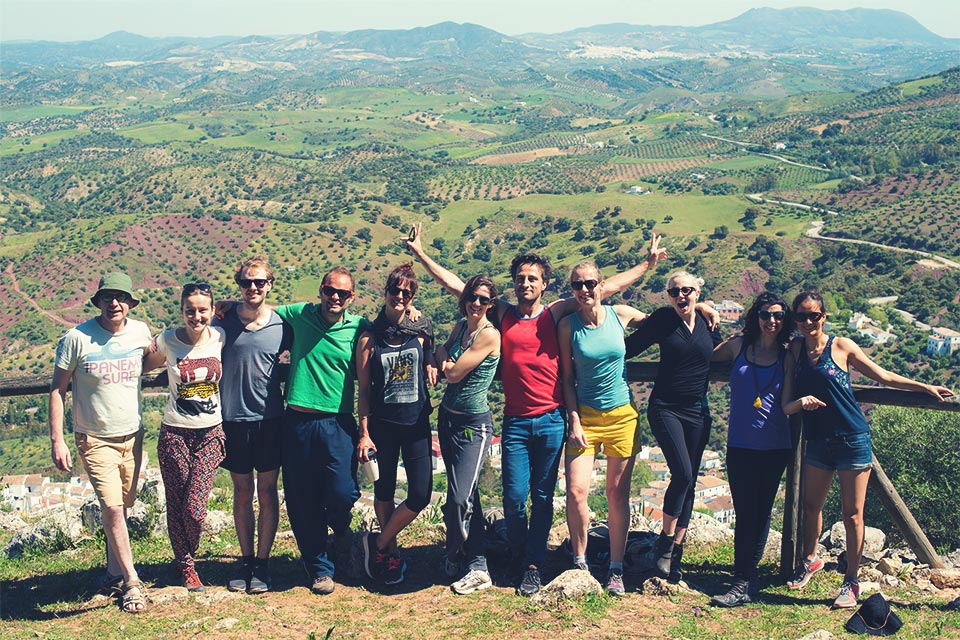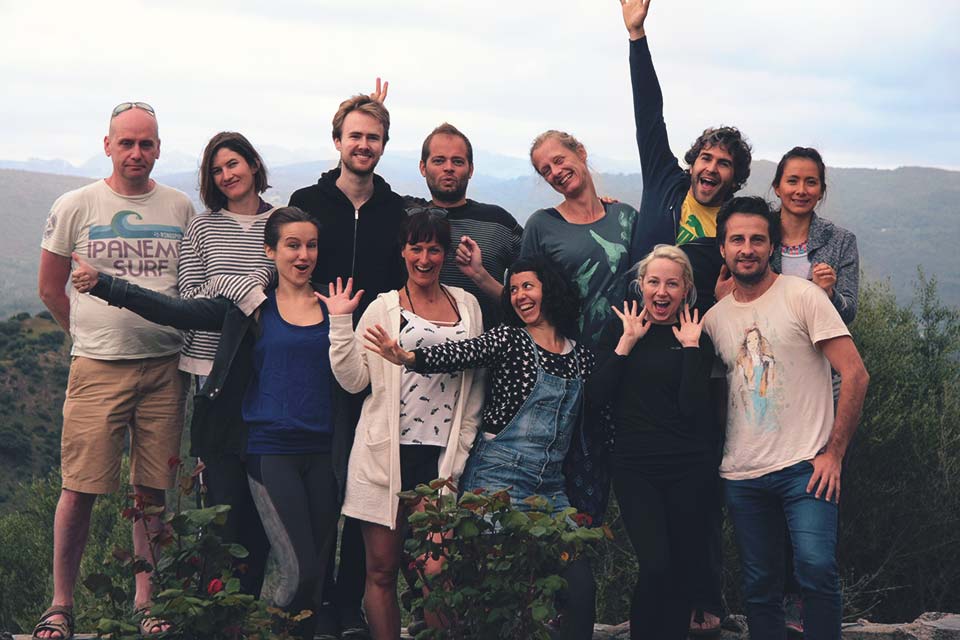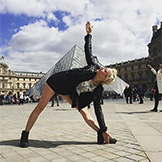In May this year (2016, for those reading from the future), my partner Karen and I wrote our first full-length yoga retreat.
Strange verb to use, I know, for a retreat. Yet it’s pretty much how you go about one, in the West at least. First come the lists: scoping & budgeting, activities, asana sequences, sightseeing locations, extra events, things-we-might-need. Then comes the endless writing: webpages, web ads, emails, flyers, retreat platform presentations, photo captions, social media posts, FAQ(&A)s.
A retreat is pretty much a story that you are putting together to tell the world - the story of a great adventure that is meant to last a week and change you for a lifetime. (Also an adventure you’ll certainly survive, since most people would not be too keen to go if there’s a noted risk to be eaten by a crocodile or fall into a kilometre-deep crevice). An adventure that will offer you genuine occasions to make connections with likeminded individuals and also abundant time to reflect upon, and by, oneself. (The word “retreat” comes from the Latin “retrahere”, which meant “to withdraw”. The meaning of “place of seclusion” is from early XVth century; “period of retirement for religious self-examination” is from mid-XVIIIth. You’re welcome.) And people that are willing to pass through the looking glass to join you will only have this means - the written story - to recognise it, to gauge if this adventure works for them, if it’s the story they are after, the story that they need.

The retreat happened - which is a great feat in itself - and it was to the agreement of all involved a success in as much as anything can be a success: it was, sure, imperfect, but it was a week filled with wonder and beauty and laughter and reflection and liberation of&from all sorts of feelings, and we would do this again anytime. In fact we are doing it again!
This article is, more than a recount of the events, a contemplation on the lessons that it’s taught us. It mentions the things we were supposed to do but didn’t and those we were supposed not to do and did, and how that can impact a retreat, but might not, because every story is unique and no one can know ahead how things are going to go. So please don’t look at this as advice on going to or organising a retreat, since we believe advice to be presumptuous in the given situation. Here we are only volunteering a tour of observations based on ours, and our students’, perspectives.
The 4 Things We Did Right
1. Choosing a hard-to-get-to National Park

Prehistoric dolmens. Booted eagles soaring over whitewashed villas in the midst of the lush high maquis of Sierra De Grazalema. The rarest salamander. Emerald green and turquoise of the river and its banks of sand where we could swim (and did – some of us naked to the dismay of others!) forgotten to the world. Peaks with historic pueblos of fairytale houses, pot-lined windows heavy with the reddest geraniums.
Although it was not exactly straightforward trying to get ourselves to the resort (2 hours’ drive from the nearest airport, getting-lost-inclusive), it was very worth it: the location we chose truly was a retreat from everyday modern life.
We found, moreover, it created a disposition of compassion toward nature, even in those that weren’t exactly tree-huggers. Since one of our main goals is to open people’s minds toward the importance of preservation, a retreat far from urban areas felt like the right, least forceful, way.
2. Joining forces with another yoga business
Oh, Lucia Yoga! We will never be grateful enough to you, mates, for providing us with so much more than most “yoga-friendly” resorts have to offer.
These guys haven’t been around the yoga world for long, but they are certainly rocking it! They aggregate teachers across the world and eco-centres across southern Spain, easing the job of many a retreat maker: their small but dedicated team of pros takes over part of the logistics, providing vegetarian, vegan and raw vegan cuisine with pesticide-free veggies from locally owned bio-dynamic farms (no doubt everyone would be vegan had they farmer, chef&master yogi Javier Guzman cook for them), the gear for the yoga shala (strictly ecological, of course), hiking quests and cultural exploration tours - which in change gave us time to concentrate on the teaching, healing, informing and connecting, basically, what we do best.
3. Offering individual body assessments
We began our retreat with a full anatomical assessment of the participants, to establish body issues and idiosyncrasies. Understanding where each yogi is at can help shape the class, and bring awareness to the facilitator on what modifications to suggest to those that can’t go too deep into [some] poses. We had quite a disparity in terms of skill level, so this was important to ensure each class was suitably challenging yet safe for everyone.
4. Offering one-to-one classes

Morgan
Yoga begun with a master and an acolyte. Through thousands of years it kept its guise until it started to adapt and shift, transitioning into what yoga is today. It’s great to progress but some times old is actually the best. (Seriously – go hug your grandma right now, if you can!)
One-to-one yoga classes are demanding in many ways: time, focus, energy, empathy, understanding of the underlying issues of your student, exploration of all limbs beyond physical exercise (asana) and breathing techniques (pranayama). They are also very rewarding, allowing for a personalisation of the practice and the most meaningful sharing between facilitator(s) and partaker. Sometimes even an inversion of roles can occur, when the former will have just as much to learn from the latter as the other way around.
In our case we were both present in each session for 4-handed assistance (one for each limb!). This coupled really nicely with the initial individual assessments, thus everyone could hone in on their problem areas. And it exposed students to two approaches to yoga that are quite different but, turns out, compliment each other really well.
Since doing one-to-one’s as two-to-one’s meant we were pushed for time, at our next retreat we’ll divide participants who choose to have the custom sessions into two groups, one for Karen and one for myself.
4 Things We Were Told Never To Do And Did Them Anyway (& We’re Not Sorry)
1. Targeting a wider audience, rather than a narrow niche

Perhaps we would’ve ended up with the best knit group in the history of retreats? And everyone would’ve married each other and gone live in a commune to raise their respective children on the Great Barrier Reef? It’s possible.
But variety remains a strong point in our opinion, and peacefully confronting divergent ideas is always enriching. It also allows people to feel like they don’t need to all be asana experts, all be vegans, all be non-smokers, all be magic thinkers and flower-power and peace to the world. Someone has to welcome the “bad” yogis too. No judgements.
2. Encouraging people to choose which classes they attended
From experience attending teacher trainings and specialisations, we knew that sometimes our bodies, so accustomed to the physical perils of modern life, can struggle with the jump into 3+ hours of yoga every day. We let people attend the classes they wanted to, and skip whenever it felt necessary. Everyone turned up to most classes anyway, and it meant that everyone stayed in great shape without injury throughout the week. (Plus the occasional lie-in is part of a holiday, right?)
3. Improvising and loose scheduling

Yogic getaways should never be as rigid as a train timetable in Tokyo. Most of us get enough of that in our daily life, and it can lead to us feeling both stressed and in a rut.
We hoped that our ways would give people a chance to set their own rhythms. Those who wanted an active adventure could go hiking and swimming, while those who wanted to laze by the pool were free to do so.
However we found that pretty much everyone wanted to explore the area, beautiful as it was, and having so many choices of places to visit became just another thing to stress about. (Ha! So that was both a positive and a negative.) On the plus side, it led to a few gloriously improvised moments – like Javier’s 5am Kundalini Yoga class, or my yoga fusion flow followed by his and Antonio’s didgeridoo vibrational healing – counted amongst the absolute highlights of the retreat.
4. Doing a tombola pick as a means to get our names out there
We decided to run a 6-day posture challenge on social media: people were to take daily pictures of themselves running through the whole Virabadhra’s Series, from Warrior 1 to Retreating Warrior, and post them tagging #YogaRuka and #ReclaimYourself. This is however something only worth doing when you have 10k+ Instagram followers. Looks like we don’t have enough fancy pants (yet) to garner 10k followers on Instagram. Too bad, we will survive.
Given our modest following, only a handful of subscribers joined our challenge. No point hiding: from a financial perspective it was a black hole. But out of the hat (or the black hole, if you’d rather) we drew Jin’s name - gorgeous model, actress and blogger from LA, California. And it was her presence there that offered Karen and myself some of the most precious insights into why it’s so important for us to be doing what we’re doing. Teach the yoga thing, that is.
4 Lessons We’ve (Maybe) Learnt
1. Experience ≠ Professionalism

Working on this retreat contoured our belief that experience and professionalism are often unrelated. We feared that, being our first full-length retreat, people might be wary or untrusting. But in fact we ourselves decided to collaborate with Lucia Yoga who are also new to the game. It turned out to be one the best decisions we made. In fact, we’ve had yoga-related collaborations with groups and studios with way more experience than Lucia Yoga, but who behaved much less professionally.
2. Sometimes you need to make decisions
Initially we thought that giving lots of choice amongst activities, allowing people to opt in or out of everything, including the yoga and meditation, would mean truly accommodating everyone. But sometimes being too accommodating can go in the detriment of all, bringing confusion and potentially even tension in a group. It’s important to create a structure where activities are planned ahead and there’s also room for just resting and hanging out without doing anything in particular. Participants have already chosen your retreat for its theme and because of the classes and extras it includes: too many alternatives may become redundant and distracting. Taking the lead and choosing, and organising a bit more of the logistics on behalf of the partakers won’t turn the experience into an army camp, it will allow them to fully relax.
3. Differences are to be celebrated

Between staff and students we had a total of 9 different nationalities at our retreat. Some of our students were younger than us, others were older, with the difference between the youngest and the oldest spanning just over two decades.
Age variations appear to be a concern for many a retreat organiser, and sometimes even gender, yet from our point of view this only served to bring colour to our experience. People can love each other and be at ease with each other quite presently even when they’re very different, and the members of our retreat were no exception.
4. Don’t Worry, Be Happy
Finally, we learned (again – we never grow tired of learning this lesson) that worry is never worth it. Things have a way of happening as they happen. There’s no point in the 8 month lead-up or during the 7 day retreat that we look back on and say “gee, I wish we would’ve stressed more then”.
As Dalai Lama put it, “If it can be solved, there’s no need to worry. If it can’t be solved, there’s no need to worry.”

